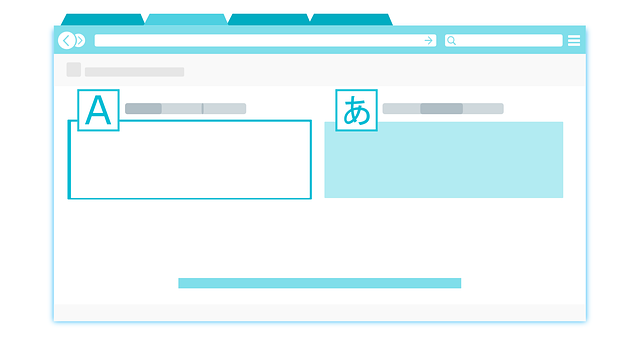Translation of slang and idioms presents unique challenges due to cultural specificity and context-driven meanings. Accurate translation requires understanding target culture, consulting native speakers, and leveraging online resources. Machine translations often fail due to lack of cultural context and biases. Human translators excel at conveying colloquialisms but need continuous training to adapt to evolving language landscapes. Modern programs focus on strategies for handling cultural nuances in global communication.
“Navigating the world of translation presents unique challenges, especially when dealing with slang and idioms. These colloquial expressions, vibrant in their native cultures, often lose nuance or gain unintended meanings when rendered into other languages. This article delves into the intricate complexities of translating slang and idioms, exploring cultural nuances, the role of context, evolving language trends, machine translation limitations, human interpretation skills, and global communication gaps. Understanding these challenges is crucial for effective translation in today’s interconnected world.”
- Cultural Nuances: Navigating Slang's Origin
- Context Matters: Idioms and Their Meanings
- Language Evolution: Keep Up with Trends
- Machine Translation: Limitations and Biases
- Human Interpretation: Art vs. Science
- Global Communication: Bridging Gaps
Cultural Nuances: Navigating Slang's Origin

Translating slang and idioms presents a unique challenge for linguists and translators due to their deeply rooted cultural nuances. Slang, by its nature, is often informal, evolving rapidly, and specific to certain social groups or regions. Idioms, on the other hand, are phrases or expressions that convey a figurative meaning not immediately apparent from the words themselves. Both require more than just word-for-word substitution to ensure effective communication across languages.
When translating slang, understanding its origin and context within a particular culture is essential. What may sound humorous or witty in one language might be offensive or completely misunderstood in another. An interpretive translation that captures both the linguistic nuances and cultural references is crucial. Moreover, quality assurance becomes paramount when reusing translated content, especially in a dynamic language landscape where slang evolves quickly. It’s not just about rendering words from one language to another; it’s about conveying the intended message accurately while respecting linguistic and cultural diversity. So, if you’re facing these challenges, consider giving us a call at Human Touch for expert guidance.
Context Matters: Idioms and Their Meanings

Context Matters: Idioms and Their Meanings
When it comes to translation, idioms pose unique challenges due to their deep cultural roots and reliance on specific contexts. What might be a simple phrase in one language can have multiple layers of meaning or even entirely different connotations in another. For instance, the English idiom “it’s raining cats and dogs” doesn’t literally mean there are pets falling from the sky but rather refers to a heavy downpour. Translators must grasp these nuances to convey the intended message accurately. This is where understanding local idiomatic expressions becomes paramount, as they often drive humor, sarcasm, or cultural references that don’t translate directly.
A reliable method for navigating this complexity involves immersing oneself in the target culture and language. Accredited programs offering real-world applications, such as our specialized translation services, can provide valuable training. Conferring with native speakers or experts in the field helps ensure that idioms are interpreted correctly. Moreover, exploring online resources, dictionaries, and cultural guides can aid translators in unlocking the true essence of these expressions. By doing so, they not only enhance their translation skills but also foster a deeper connection to the language’s vibrancy, ensuring that the spirit of each idiom is preserved across languages and cultures. Find us at marketing translations for more insights into overcoming these linguistic hurdles.
Language Evolution: Keep Up with Trends

Language is ever-evolving, and slang and idioms are no exception. As new trends emerge, so does the need for efficient translating cultural nuances in these dynamic expressions. What might be considered funny or trendy in one culture could hold a different meaning or even fall flat in another.
Keeping up with these linguistic shifts is essential for accurate internationalization and cultural adaptation in translation. It’s not just about replacing words word-for-word; it involves understanding the context, local customs knowledge, and the nuanced meanings behind slang and idioms to give us a call at culture-bound terminology. This requires skilled translators who can adapt and convey these expressions appropriately, ensuring effective communication across diverse languages and cultures.
Machine Translation: Limitations and Biases

Machine translation technologies have made significant strides, offering convenient solutions for quick translations. However, when it comes to slang and idioms, their capabilities are far from perfect. These advanced algorithms often struggle with the nuances and cultural context of informal language, leading to literal translations that sound awkward or even nonsensical in the target language. The challenge lies in capturing the intended meaning behind these expressions, which frequently rely on shared cultural experiences and historical references specific to a particular community.
The issue is further exacerbated by biases inherent in machine learning models, which can perpetuate stereotypes and reflect societal inequalities. For instance, certain slang terms might carry derogatory connotations or be exclusive to subcultures, making their accurate translation even more challenging. To overcome these limitations, businesses seeking high-quality translations should consider accredited programs focusing on real-world applications, ensuring that translators are equipped with the cultural sensitivity required to handle such intricate nuances. Visit us at [translation validation cultural sensitivity anytime] for expert guidance in navigating these complex linguistic territories.
Human Interpretation: Art vs. Science

The art and science of translation often clash when it comes to handling slang and idioms. On one hand, human interpreters bring cultural sensitivity, contextual understanding, and an intuitive grasp of language nuances, making them adept at conveying these expressions accurately. They can capture the spirit and intent behind colloquialisms, ensuring the translated content resonates with native speakers. However, this creative aspect also presents challenges; what sounds amusing or makes sense in one language might not translate well without losing its original charm.
On the other hand, translation memory (TM) tools and self-study resources offer a more scientific approach. These AI-powered solutions, such as giving us a call at AI-powered tools, can streamline the process by drawing on existing translations of similar phrases. They provide consistency and efficiency, especially in large-scale projects or when dealing with repetitive slang and idioms. Yet, they may struggle to capture subtle cultural references or playful language, highlighting the need for human expertise. Translation exams and certifications validate these skills, ensuring professionals stay adept at navigating this intricate linguistic landscape.
Global Communication: Bridging Gaps

In today’s interconnected world, global communication has become the norm, bridging cultural gaps and fostering understanding across borders. However, one significant challenge lies in effectively translating slang and idioms—an essential aspect of everyday language that often eludes precise interpretation. These linguistic elements are deeply rooted in specific cultures, reflecting historical perspectives and local nuances that can be hard to capture in a direct translation.
Language learning apps and contemporary practices in beginner translator training have acknowledged this challenge, incorporating strategies to enhance the handling of slang and idioms. While industry standards strive for accuracy, they also emphasize the importance of cultural adaptation, ensuring that translated content resonates with target audiences. This involves delving into historical perspectives, understanding the context in which these expressions originated, and then finding creative ways to convey their intended meaning and tone—a complex yet crucial task in a rapidly globalizing world.
Translating slang and idioms presents a unique set of challenges that go beyond mere word-for-word substitution. From cultural nuances to evolving language trends, effective translation demands a deep understanding of context and local expressions. While machine translation tools can provide a starting point, they often struggle with these subtleties. Human interpreters play a vital role in preserving the intended meaning and cultural essence, especially in global communication where precise and culturally sensitive language is key. By bridging gaps between linguistic nuances, professional translators facilitate meaningful connections worldwide.
